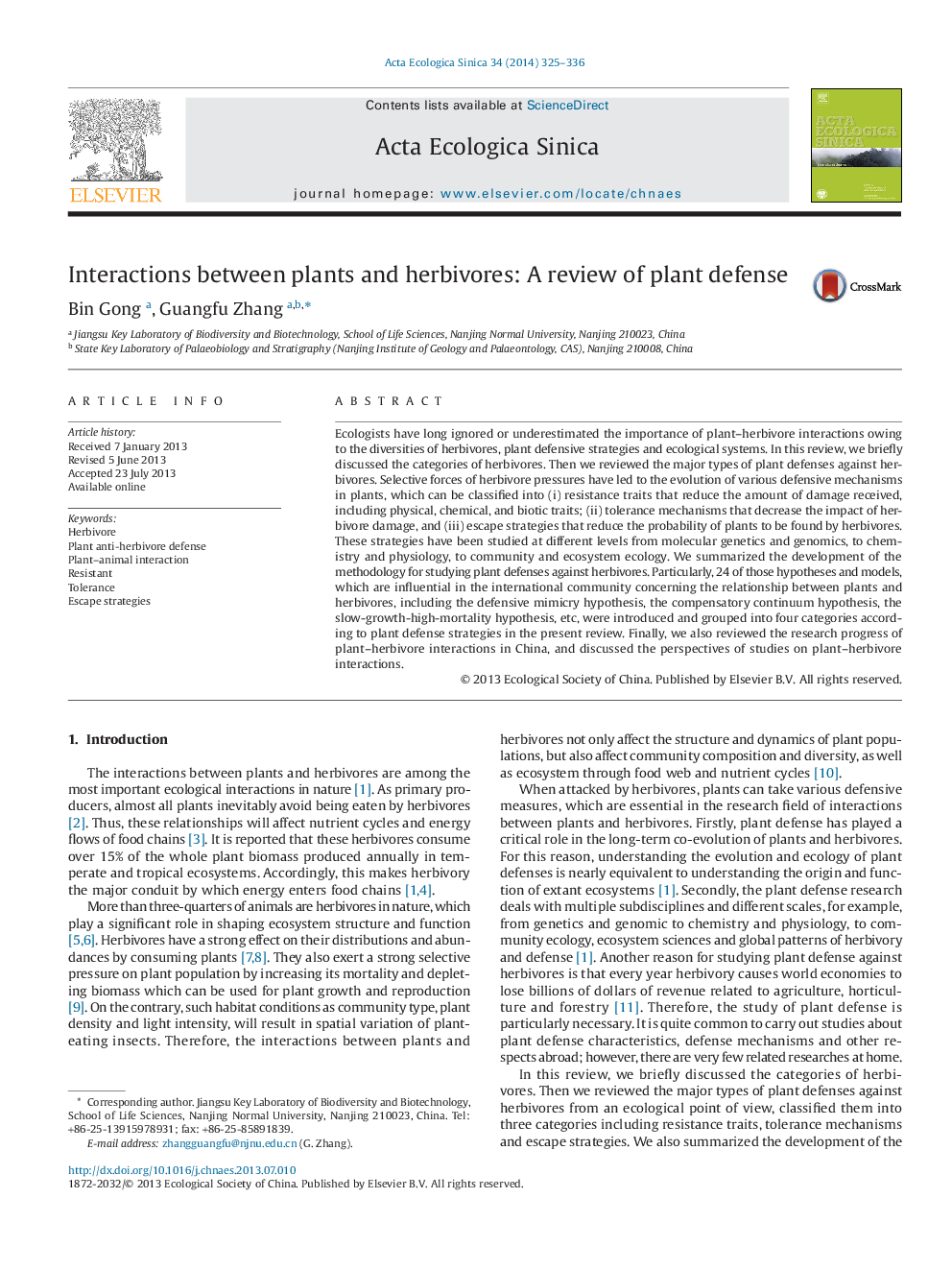| Article ID | Journal | Published Year | Pages | File Type |
|---|---|---|---|---|
| 4379872 | Acta Ecologica Sinica | 2014 | 12 Pages |
Ecologists have long ignored or underestimated the importance of plant–herbivore interactions owing to the diversities of herbivores, plant defensive strategies and ecological systems. In this review, we briefly discussed the categories of herbivores. Then we reviewed the major types of plant defenses against herbivores. Selective forces of herbivore pressures have led to the evolution of various defensive mechanisms in plants, which can be classified into (i) resistance traits that reduce the amount of damage received, including physical, chemical, and biotic traits; (ii) tolerance mechanisms that decrease the impact of herbivore damage, and (iii) escape strategies that reduce the probability of plants to be found by herbivores. These strategies have been studied at different levels from molecular genetics and genomics, to chemistry and physiology, to community and ecosystem ecology. We summarized the development of the methodology for studying plant defenses against herbivores. Particularly, 24 of those hypotheses and models, which are influential in the international community concerning the relationship between plants and herbivores, including the defensive mimicry hypothesis, the compensatory continuum hypothesis, the slow-growth-high-mortality hypothesis, etc, were introduced and grouped into four categories according to plant defense strategies in the present review. Finally, we also reviewed the research progress of plant–herbivore interactions in China, and discussed the perspectives of studies on plant–herbivore interactions.
